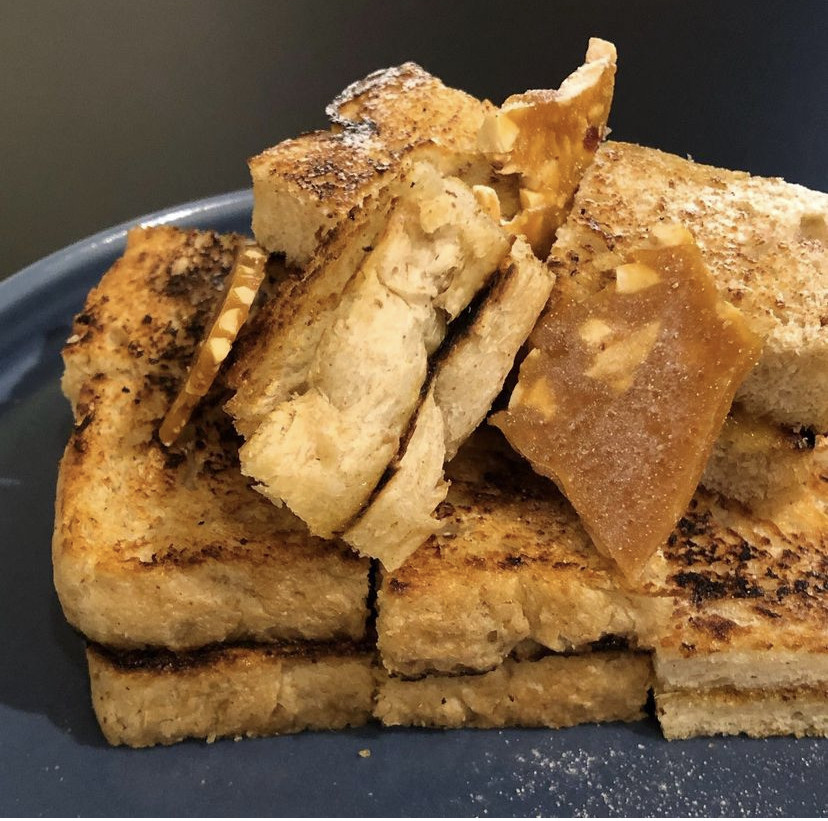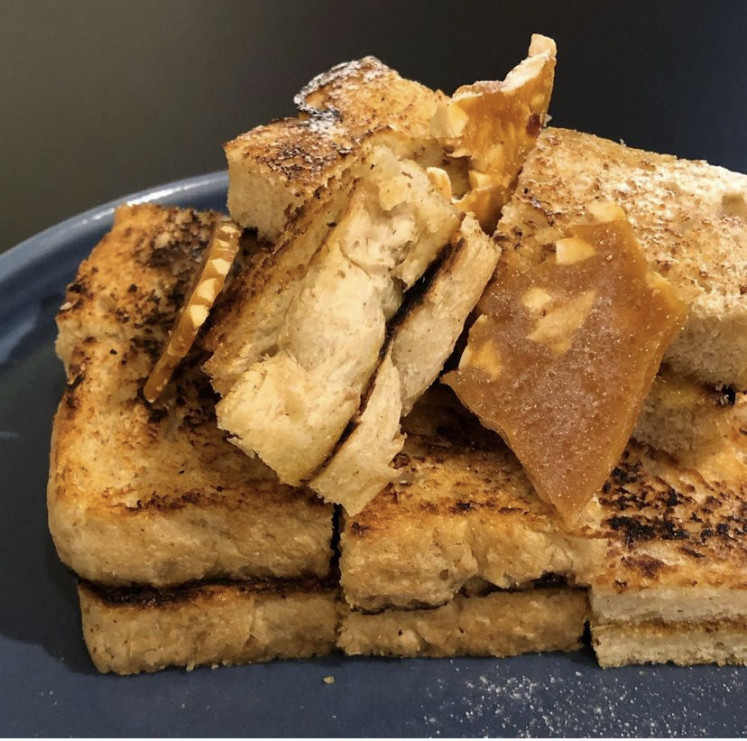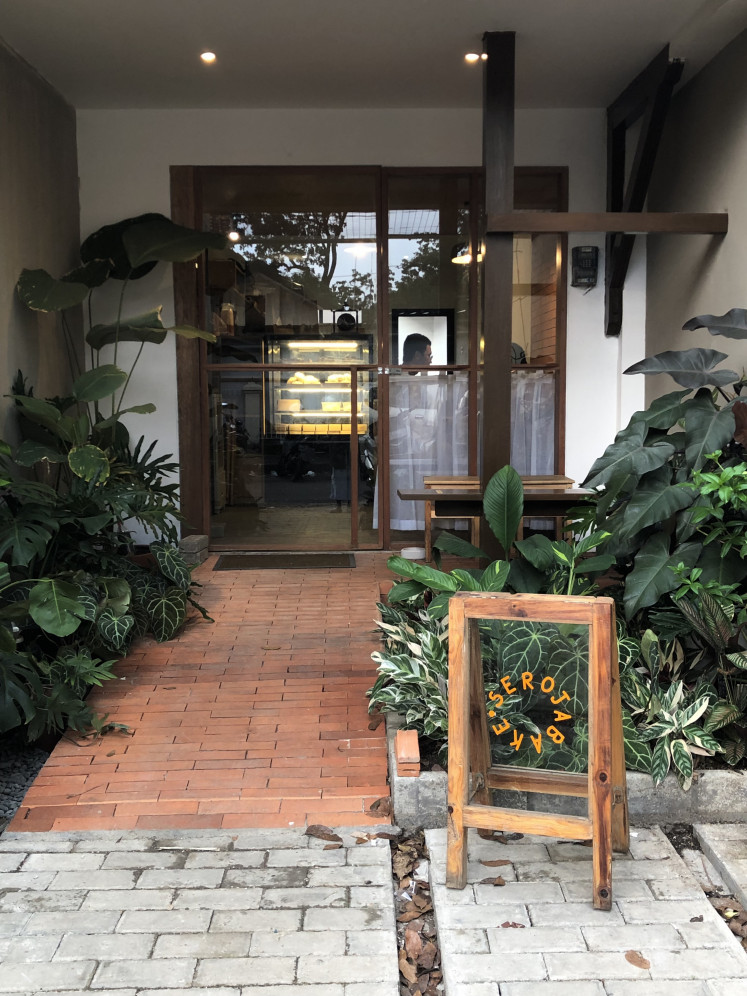Popular Reads
Top Results
Can't find what you're looking for?
View all search resultsPopular Reads
Top Results
Can't find what you're looking for?
View all search resultsThe man who loves bread: the story behind artisan bakery Seroja Bake
For Faza Chu, a lot of research and deliberations go into bread making.
Change text size
Gift Premium Articles
to Anyone
For Faza Chu, a lot of research and deliberation go into bread making.
“At Seroja, we see the dragon of change residing in the flour sacks of bakers’ workshops.”
This is what Faza Chu, the man behind artisan bakery Seroja Bake, wrote in the first issue of its zine, which was released at the 2021 Bandung Design Biennale.
Taken out of the zine’s context, the line — which comes immediately after a sketch of a seroja (Lotus flower) — might come across as a bit quixotic, but Faza and Seroja Bake’s approach has never been far from well-researched findings.
Start small: After his success in creating Seroja Bake's signature loaves, business started rolling with other products like kaya jams and customers began coming to the now-closed outlet in Pelesiran, Tamansari, Bandung. (Instagram/Seroja Bake) (Instagram/Seroja Bake)Deep in butter
Late into his final years of study at the Bandung Institute of Technology in 2019, Faza regularly cycled back and forth around Pelesiran, Tamansari (located at the heart of Bandung) and the hilly terrain of Lembang (a village located north of Bandung). He collected milk, acquired from KPSBU Lembang, a cattle-farming cooperative in northern Bandung until reaching a minimum of 36 liters, the amount of milk required to yield 1 kilogram of butter.
These attempts at making butter were part of his research regarding sustainability, particularly concerning the bakery industry in Indonesia.
“Wheat has gradually become one of the staple foods of Indonesia. Through bread and noodles, it is now ranked as the second- and third-largest, and is still growing. Rice is still [ranked as] the first, although its trend is decreasing," said Faza, talking to The Jakarta Post at Seroja Bake’s newest outlet in Cihapit.
As a student, Faza’s concerns toward the industry were particularly regarding the supply of raw materials back then. “The bakery industry in Indonesia fully relied on imported goods as raw materials," noted Faza. “I tried to tackle butter first, as it was, relatively, the easiest one. Wheat is too complex and more difficult to approach. The research into wheat in Indonesia is also still ongoing. It needs a cold and dry climate to grow, while colder climates in Indonesia, most of the time, come with high humidity," he said.
Faza also noted a number of places where wheat can be found in Indonesia, “but not at a commercial level,” he added.
Breaking bread
Faza’s research into butter production, which proved quite lengthy and arduous due to Faza, as he puts it, “not being much of a cook”, then brought him another aspect to consider. He needed to secure demand for its byproduct, which was skimmed milk. He had 36 liters of skimmed milk on hand after his last attempt, which also happened to be his very first success in making butter -- he was ready to give up should he fail again that time.
As the son of a baker, he did the most sensible thing for him to do. He made bread.
“I had old bread machines that my mother used in Bandung," Faza said. He also noted that it was the first time he made both Seroja Bake’s signature loafs.
“Hence the Classic Seroja Loaf and Dago Milk Bread were born. Those two products were the ones that kick-started Seroja Bake,” said Faza with a smile.
Mouthwatering: Pictured is a plate of Kopitiam-style toast with praline at Seroja Bake. (Instagram/Seroja Bake )Seroja Bake’s operations snowballed from there. “Because we made bread, we started making kaya jams. Then we had egg whites piling up as a byproduct of the jam, so we made pavlovas." It did not take long for Seroja Bake to start receiving dine-in enquiries, and people started coming to its humbler, now-closed, outlet in Pelesiran, Tamansari.
“It was chaos," said Faza regarding the dine-in situation at Seroja Bake Pelesiran. At one point three large luxury SUVs descended into the narrow alleyway of Pelesiran.
“Pelesiran was a close-knit community, it didn’t sit right with us so we moved when Seroja started attracting even more people."
Power to the bakers
The writer dug into a Tart Singkong (cassava tart) that Faza served alongside a tall glass of sweetened iced tea. The yellowish key lime custard, topped with translucent green lemon basil gel cut in a semicircle was a delightful bitter treat. The tart was quite intense, yet it had a seemingly mellow aftertaste.
“I reckon that the clashing sourness [of the tart] and the sweetness [of the tea] can be quite palatable," Faza said as the writer sipped the tea in an effort to tone down the bitterness. It was a fairly refreshing combination.
“In terms of the supply chain, it would not be efficient if we tried to source everything domestically. The carbon footprint in doing so will also be much more significant. What needs to be highlighted instead is that, in Indonesia, the power of the bakery industry lies in the hands of small and medium enterprises (SMEs).
“Seventy percent of the raw materials in the bakery industry is utilized by small bakeries," Faza said.
He was fortunate enough to get his hands on research papers that were conducted by top data-analytics companies in the world through one of the food and beverage unicorns in Indonesia. “What I had been researching during my university years and at Seroja Bake were validated there."
Faza specified that the research mentioned more than 500 brand names when people were asked about their personal preferences for bread, which he later confirmed during his visits to Palembang, Lampung and Makassar, among other places. “Everyone has their own unique brand preference," he said.
“What we are aiming for in Seroja Bake is to give a little more opportunity for local farmers. So that they can tap into the rapidly growing bakery industry."
This is reflected in Seroja Bake’s principle, which is to utilize locally sourced flour, even if it is not 100 percent. The Sourdough Kampung, for instance, utilizes 10 percent content of local rice bran flour—the local equivalent of cereal. The domestic consumption of wheat in Indonesia is so massive, that if only 5 percent of the mix were to be substituted with local flour, it could absorb the produce from the entire sorghum fields in Indonesia. “Imagine if all the bakers in Indonesia were to unite."
Talk of the alleyway: Seroja Bake started out from Faza's house in Plesiran, Bandung where his mother made whitelabel bread at a low price point for resellers. (Courtesy of Faza Chu) (Courtesy of Faza Chu/Courtesy of Faza Chu)Embracing inconsistencies
Faza pointed out that Seroja Bake’s aspiration to unite artisans in the effort of starting a movement is quite similar to what was done by Noma’s René Redzepi and Claus Meyer through the New Nordic Cuisine Manifesto, where they emphasized the need to base their cooking on ingredients and produce whose characteristics are particular to their climates, landscapes and waters.
Seasonal changes also must be reflected in the meals they make, all the while promoting Nordic produce. The manifesto might have also inspired Seroja Bake’s approach, especially in reflecting seasonal changes. Such as the use of seasonal fruits for the toppings of its pavlovas, to the inconsistencies of the taste of the bread due to the inherent inconsistent quality of the local counterparts.
“These inconsistencies must be accepted so that we can adopt locally sourced ingredients."













